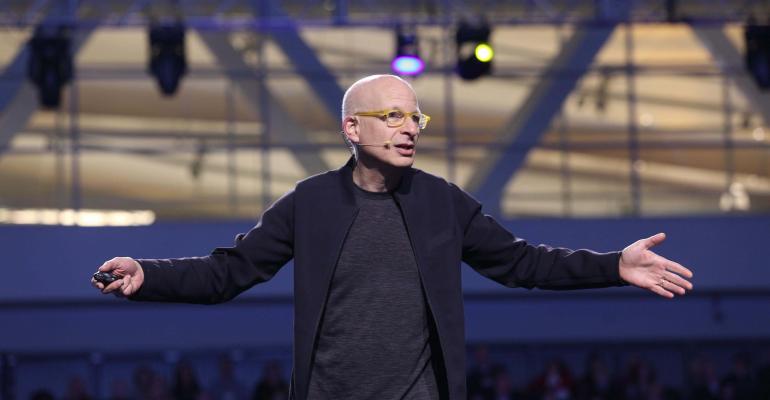At Professional Convention Management Association's Convening Leaders 2019 conference in Pittsburgh, more than 3,000 meeting planners and industry suppliers got proven lessons in how to be uniquely valuable in their marketplace from Seth Godin, a renowned marketing expert and author of 19 best-selling business books.
Godin's ideas have staying power and succeed across all generations of consumers and business professionals. Here's the proof: Godin wrote his first best-seller, The Guerilla Marketing Handbook, more than 25 years ago; 2009's Purple Cow is the best-selling marketing book of the past decade; and Unleashing the Ideavirus was the most popular e-book ever published until a few years ago.
As a result, the atmosphere inside the main hall at Pittsburgh's David L. Lawrence Convention Center was palpably energetic ahead of Godin's keynote address. That excitement was rewarded when it became clear that Godin had customized his 45-minute presentation, titled "This Is Marketing: We Can't Be Seen Until We Learn to See," for those who plan events that attendees pay for.
Godin illustrated his first lesson using a situation with which association planners are all too familiar: large meal events featuring 10-person round tables that make networking and peer-to-peer learning difficult. When Godin told the audience that association events cannot move towards being more generic in the hope of having mass appeal—rather, they must become more specific for the needs of each segment of the audience—he said this: "Ten-person rounds were invented by people who wanted to serve food faster, not by people looking to encourage great conversation. You have to do things differently than the rest of the market so that your price cannot be compared to the price of any competing product, because your product is unique."
Even with event elements that presently work well for attendees, Godin stressed that planners must diplomatically but firmly push back if their executives think that simply providing more of the same at next year's event will satisfy the audience. "Your bosses keep saying, 'more, more, more.' But mass is the definition of average. Don't just manage your business—lead in your niche, or else you will be simply competing on price...The question is, why aren't you dating your audience?" Godin's point with that last line: Getting to know each segment of your attendee base deeply will produce ideas you can implement to make them feel understood, make them loyal, and make them willing to pay for that unique experience repeatedly.
What's more, all the innovative content and formats you offer won't have maximum impact unless the event's marketing strategy is focused on the specific qualities of that audience. "You don't sell keynotes and breakout sessions—you sell what it feels like to be in that room, to be part of something with those people," Godin said. "Your message must be, 'People like you do things like this,'" and your event will be the place where those things happen.
Social media is another critical element to promote the uniqueness of your event. "Rather than use a funnel approach with mass communications to get some people to respond, turn the funnel sideways and make it a megaphone you hand to your members," Godin said. By encouraging your members to provide their own perspectives and content, those channels become unique and valuable in the same way the event is. "There are a lot of cows in the world, and almost all of them are unremarkable," Godin said. "Be a purple cow."
With both your internal marketing efforts and peer-populated social-media channels, Godin says the goal is to "tell stories that resonate. Because when people make their choice, their choice will be based on the story." In short, that is effective marketing.






